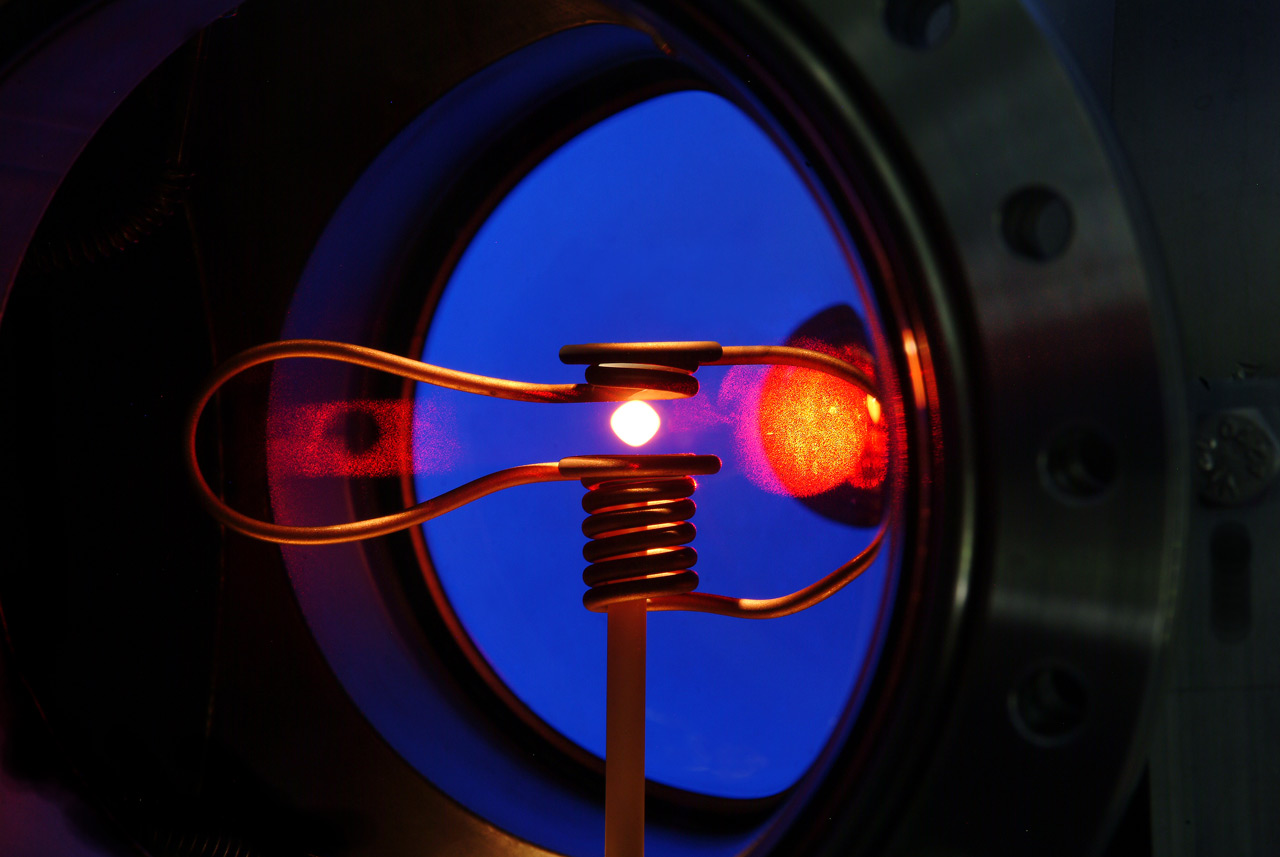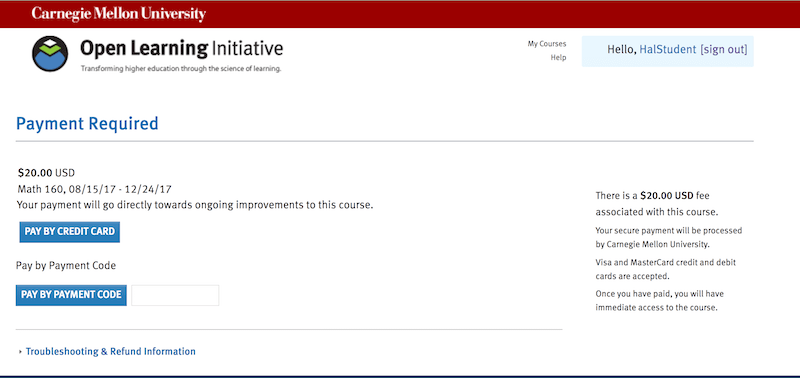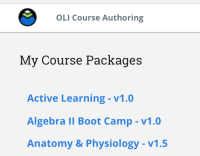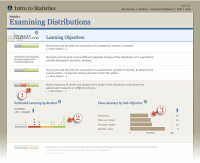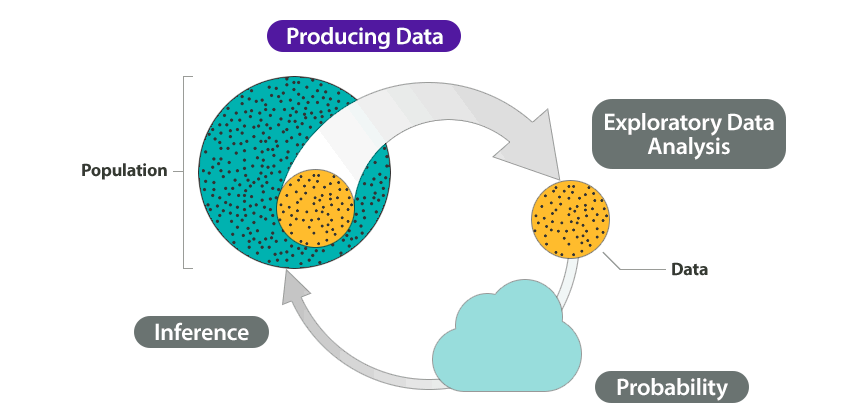The College Physics 2 course is an algebra-based Physics course covering electricity and magnetism, optics, and modern physics.
College Physics 2
$25
- Description
- What students will learn
- Learning objectives
- Course assessments, activities, and outline
- Other course details
- System requirements
- Included instructor tools
Description
The College Physics 2 course is an algebra-based Physics course covering electricity and magnetism, optics, and modern physics. The course covers all the topics included in the second semester of College Physics and includes formative assessments with scaffolding and summative assessments at the end of each module. The course is grounded in real-world examples, interactives, lecture videos, Phet simulations, and scaffolded practice problems all designed in a logical flow.
Note: For successful completion of this course it is recommended that students are familiar with College Physics 1 or its equivalent.
What students will learn
Topics Covered:
- Introduction to College Physics 2
- Electric Charge and Electric Field
- Electric Potential and Electric Field
- Electric Current, Resistance, and Ohm’s Law
- Circuits and DC Instruments
- Magnetism
- Electromagnetic Induction, AC Circuits, and Electrical Technologies
- Electromagnetic Waves
- Geometric Optics
- Vision and Optical Instruments
- Wave Optics
Learning objectives
Module 1: Course Introduction
Module 2: Electric Charge and Electric Field
• Define electric charge, and describe how the two types of charge interact.
• Describe the law of conservation of charge.
• Define conductor and insulator, explain the difference, and give examples of each.
• Explain what happens to an electric force as you move farther from the source.
• Calculate the electrostatic force between two charged point forces, such as electrons or protons.
• Compare the electrostatic force to the gravitational attraction for a proton and an electron; for a human and the Earth.
• Describe a force field and calculate the strength of an electric field due to a point charge.
• Calculate the force exerted on a test charge by an electric field.
• Calculate the total force (magnitude and direction) exerted on a test charge from more than one charge
• Describe an electric field diagram of a positive point charge; of a negative point charge with twice the magnitude of the positive charge
• Describe how a water molecule is polar.
• Explain electrostatic screening by a water molecule within a living cell.
• List the three properties of a conductor in electrostatic equilibrium.
• Explain the effect of an electric field on free charges in a conductor.
• Describe the electric field surrounding Earth.
• Explain what happens to an electric field applied to an irregular conductor.
• Describe several real-world applications of the study of electrostatics.
Module 3: Electric Potential and Electric Field
• Explain electron volt and its usage in submicroscopic process.
• Determine electric potential energy given potential difference and amount of charge.
• Define electric potential and electric potential energy. Describe the relationship between potential difference and electrical potential energy.
• Describe the relationship between voltage and electric field.
• Calculate electric field strength given distance and voltage and describe the relationship between voltage and electric field.
• Distinguish between electric potential and electric field.
• Determine the electric potential of a point charge given charge and distance.
• Explain equipotential lines and equipotential surfaces.
• Describe the action of grounding an electrical appliance.
• Describe an electric field diagram of a positive point charge; of a negative point charge with twice the magnitude of positive charge
• Describe the action of a capacitor and define capacitance.
• Explain parallel plate capacitors and their capacitances.
• Determine capacitance given charge and voltage.
• Identify series and parallel parts in the combination of connection of capacitors.
• Calculate the effective capacitance in series and parallel given individual capacitances.
• List some uses of capacitors and express in equation form the energy stored in a capacitor.
• Explain the function of a defibrillator.
Module 4: Electric Current, Resistance, and Ohm’s Law
• Define electric current, ampere, and drift velocity and describe the direction of charge flow in conventional current.
• Use drift velocity to calculate current and vice versa.
• Calculate voltages, currents, or resistances with Ohm’s law.
• Describe a simple circuit.
• Use resistivity to calculate the resistance of specified configurations of material.
• Use the thermal coefficient of resistivity to calculate the change of resistance with temperature.
• Calculate the power dissipated by a resistor and power supplied by a power supply.
• Calculate the cost of electricity under various circumstances.
• Explain the differences and similarities between AC and DC current.
• Calculate rms voltage, current, and average power.
• Explain why AC current is used for power transmission.
• Define thermal hazard, shock hazard, and short circuit.
• Explain what effects various levels of current have on the human body.
• Explain the process by which electric signals are transmitted along a neuron.
• Explain the effects myelin sheaths have on signal propagation.
• Explain what the features of an ECG signal indicate.
Module 5: Circuits and DC Instruments
• Calculate the voltage drop of a current across a resistor using Ohm’s law.
• Compare and contrast the way total resistance is calculated for resistors in series and in parallel.
• Explain why total resistance of a parallel circuit is less than the smallest resistance of any of the resistors in that circuit.
• Calculate total resistance of a circuit that contains a mixture of resistors connected in series and in parallel.
• Compare and contrast the voltage and the electromagnetic force of an electric power source.
• Describe what happens to the terminal voltage, current, and power delivered to a load as internal resistance of the voltage source increases (due to aging of batteries, for example).
• Explain a complex circuit using Kirchhoff’s rules, using the conventions for determining the correct signs of various terms.
• Explain why a voltmeter must be connected in parallel with the circuit.
• Calculate the resistance that must be placed in series with a galvanometer to allow it to be used as a voltmeter with a given reading.
• Explain why measuring the voltage or current in a circuit can never be exact.
• Explain why a null measurement device is more accurate than a standard voltmeter or ammeter.
• Explain the importance of the time constant, τ , and calculate the time constant for a given resistance and capacitance.
• Explain why batteries in a flashlight gradually lose power and the light dims over time.
• Describe what happens to a graph of the voltage across a capacitor over time as it charges.
• Explain how a timing circuit works and list some applications.
• Calculate the necessary speed of a strobe flash needed to “stop” the movement of an object over a particular length
Module 6: Magnetism
• Describe how magnetic poles interact with each other.
• Describe the role of magnetic domains in magnetization.
• Explain the significance of the Curie temperature.
• Describe the relationship between electricity and magnetism.
• Define magnetic field and describe the magnetic field lines of various magnetic fields.
• Calculate the magnetic force on a moving charge.
• Describe the effects of a magnetic field on a moving charge.
• Calculate the radius of curvature of the path of a charge that is moving in a magnetic field.
• Calculate the Hall emf across a current-carrying conductor.
• Calculate the magnetic force on a current-carrying conductor.
• Calculate the torque on a current-carrying loop in a magnetic field.
• Calculate current that produces a magnetic field.
• Calculate the force between two parallel conductors.
• Describe some applications of magnetism.
Module 7: Electromagnetic induction, AC circuits, and Electrical Technologies
• Calculate the flux of a uniform magnetic field through a loop of arbitrary orientation.
• Describe methods to produce an electromotive force (emf) with a magnetic field or magnet and a loop of wire.
• Calculate emf, current, and magnetic fields using Faraday’s Law.
• Explain the physical results of Lenz’s Law
• Calculate emf, force, magnetic field, and work due to the motion of an object in a magnetic field.
• Explain the magnitude and direction of an induced eddy current, and the effect this will have on the object it is induced in.
• Describe several applications of magnetic damping.
• Calculate the emf induced in a generator.
• Calculate the peak emf which can be induced in a particular generator system.
• Explain what back emf is and how it is induced.
• Explain how a transformer works.
• Calculate voltage, current, and/or number of turns given the other quantities.
• Explain how various modern safety features in electric circuits work, with an emphasis on how induction is employed.
• Calculate the inductance of an inductor.
• Calculate the energy stored in an inductor.
• Calculate the emf generated in an inductor.
• Calculate the current in an RL circuit after a specified number of characteristic time steps.
• Calculate the characteristic time of an RL circuit.
• Calculate inductive and capacitive reactance.
• Calculate current and/or voltage in simple inductive, capacitive, and resistive circuits.
• Calculate the impedance, phase angle, resonant frequency, power, power factor, voltage, and/or current in a RLC series circuit.
• Explain the significance of the resonant frequency.
Module 8: Electromagnetic Waves
• Describe Maxwell’s equations
• Calculate the maximum strength of the magnetic field in an electromagnetic wave, given the maximum electric field strength.
• Explain why the higher the frequency, the shorter the wavelength of an electromagnetic wave.
• List and explain the different methods by which electromagnetic waves are produced across the spectrum.
• Explain how the energy and amplitude of an electromagnetic wave are related.
• Given its power output and the heating area, calculate the intensity of a microwave oven’s electromagnetic field, as well as its peak electric and magnetic field strengths.
• Describe color perception, color addition, and color subtraction
• Explain how monochromatic light passes through colored filters
• Explain how red, green, and blue light mix to make the colors of the rainbow
• Describe color vision in relation to real-world situations
• Determine the color of each light.
• Explain the color changes when variables are introduced.
• Determine what colors are created through Color Mixing.
• Describe how colors are created. Investigate the effects that can be created with colored lighting.
• Explain how white light is produced.
Module 9: Geometric Optics
• List the ways by which light travels from one source to another location.
• Explain the reflection of light from polished and rough surfaces.
• Determine the index of refraction, given the speed of light in a medium.
• Explain the phenomenon of total internal reflection.
• Describe the workings and uses of fiber optics.
• Explain the reason for the sparkle of diamonds.
• Explain the phenomenon of dispersion and discuss its advantages and disadvantages.
• List the rules for ray tracking for thin lenses.
• Explain the formation of images using the technique of ray tracking.
• Determine the power of a lens given the focal length.
• Explain image formation in a flat mirror.
• Explain with ray diagrams the formation of an image using spherical mirrors.
• Determine focal length and magnification given radius of curvature, the distance of object, and image.
Module 10: Vision and Optical Instruments
• Explain the image formation by the eye and why peripheral images lack detail and color.
• Explain the accommodation of the eye for distant and near vision.
• Identify and discuss common vision defects.
• Explain nearsightedness, farsightedness, and laser vision corrections.
• Explain the simple theory and retinex theory of color vision.
• Describe the working of a telescope.
• Describe different types of microscopes.
• Describe optical aberration.
• Describe the shape and refractive properties of a convex and concave lens.
• Explain how are lenses used to correct vision
• Describe the conditions of nearsightedness and farsightedness.
• Apply the properties of convex and concave lenses to correct vision disorders.
• Describe human vision anomalies.
• Demonstrate a comprehension of the Anatomy of the Human Eye
• Explain the eye as an optical system, including schematic eyes
• Explain the refractive states of the eye and common refractive errors
• Explain how an image is formed by a converging lens using ray diagrams.
• Explain and apply the principles of real and virtual image production including size, brightness, and location as well as be able to draw accurate basic diagrams of lens systems.
• Describe the characteristics and uses of spherical, cylindrical, and toric lenses.
Module 11: Wave Optics
• Explain the wave character of light and identify the changes when light enters a medium.
• Explain the propagation of transverse waves.
• Explain and apply Huygens’s principle.
• Define constructive interference for a double slit and destructive interference for a double slit.
• Explain the pattern obtained from the diffraction grating.
• Determine the single-slit diffraction pattern.
• Describe the Rayleigh criterion.
• Describe the rainbow formation by thin films.
• Explain the meaning of polarization.
• Describe the different types of microscopes.
Course assessments, activities, and outline
The course consists of:
- practice activities
- Physics text from Open Stax
- videos
- quizzes
- reflection opportunities
Other course details
System requirements
OLI system requirements, regardless of course:
- internet access
- an operating system that supports the latest browser update
- the latest browser update (Chrome recommended; Firefox, Safari supported; Edge and Internet Explorer are supported but not recommended)
- pop-ups enabled
- cookies enabled
Some courses include exercises with exceptions to these requirements, such as technology that cannot be used on mobile devices.
This course’s system requirements:
- N/A
Included instructor tools
Instructors who teach with OLI courses benefit from a suite of free tools, technologies, and pedagogical approaches. Together they equip teachers with insights into real-time student learning states; they provide more effective instruction in less time; and they’ve been proven to boost student success.

